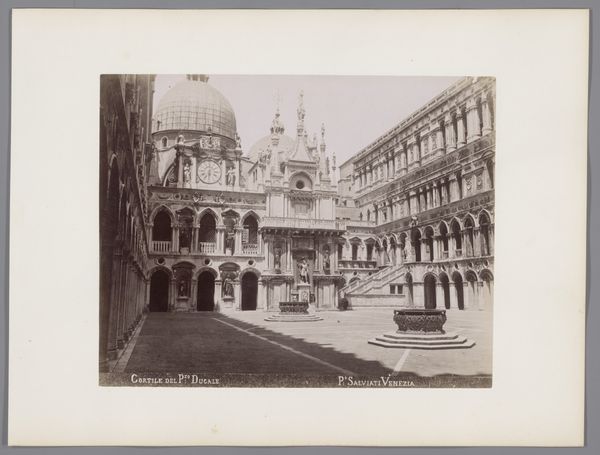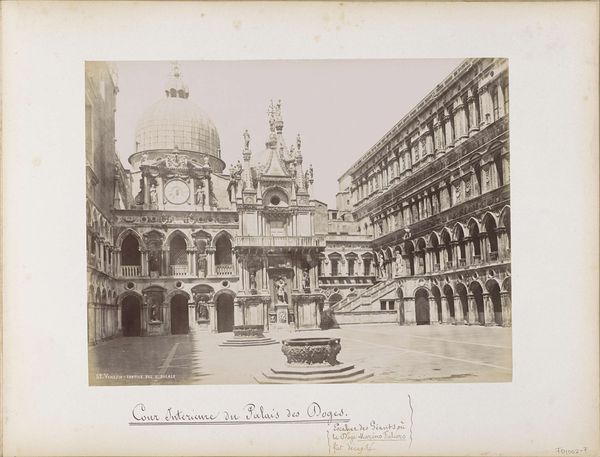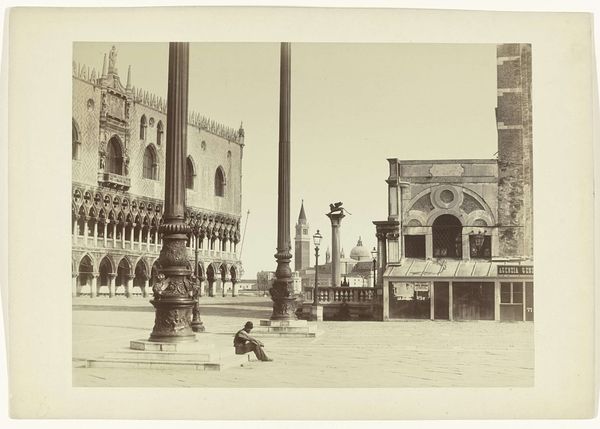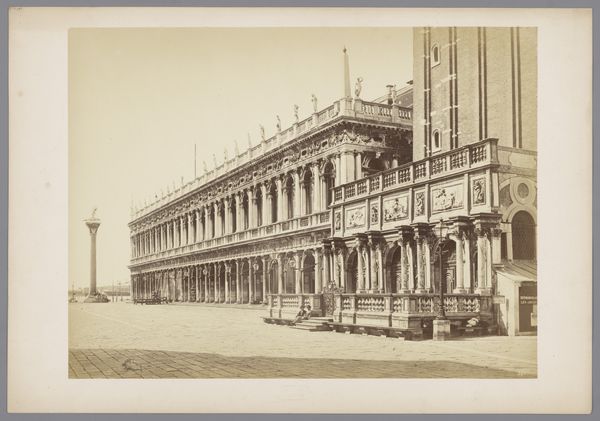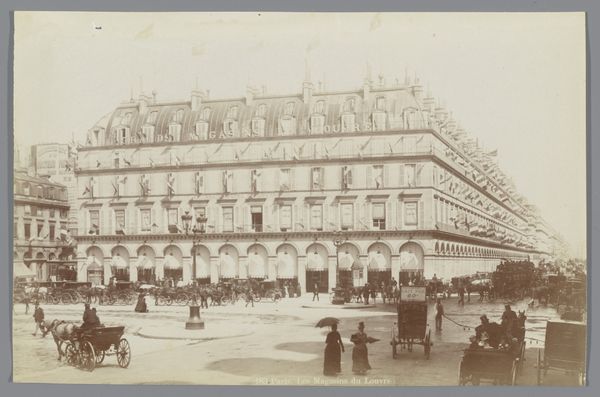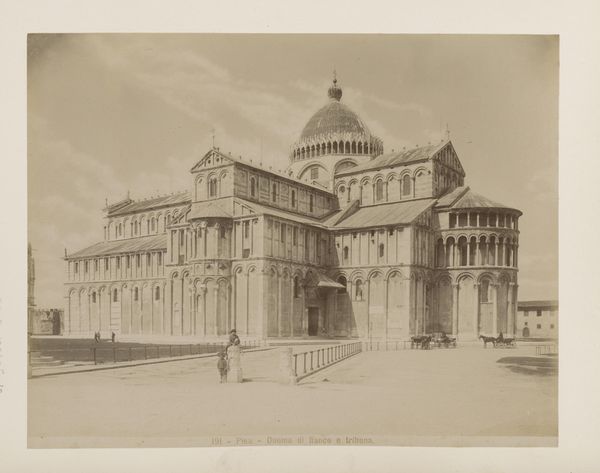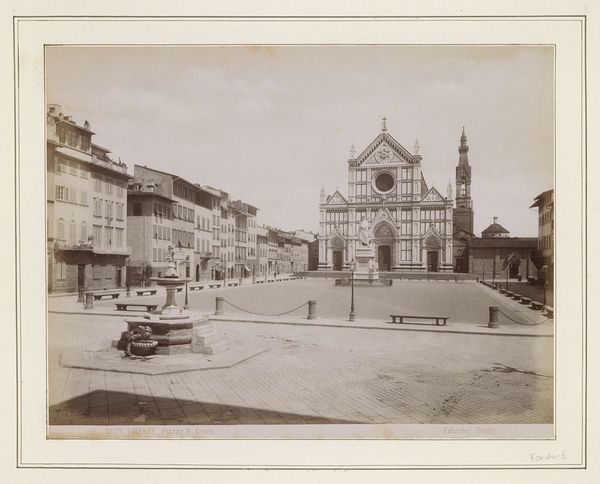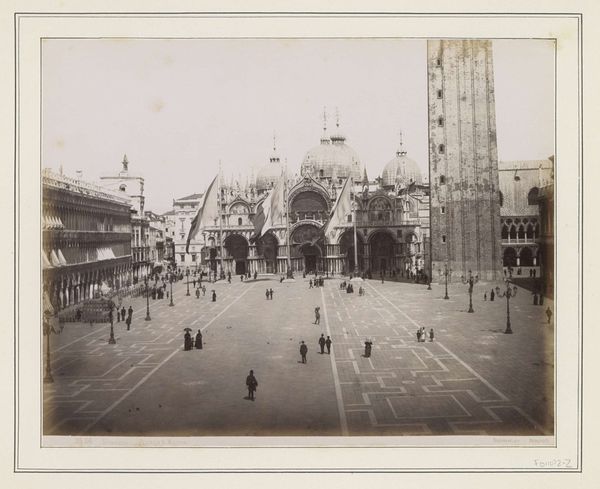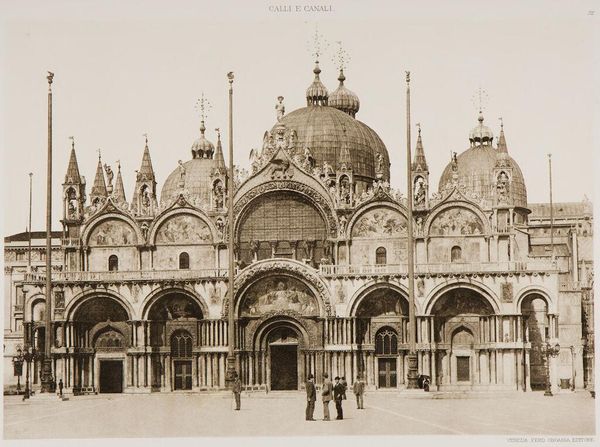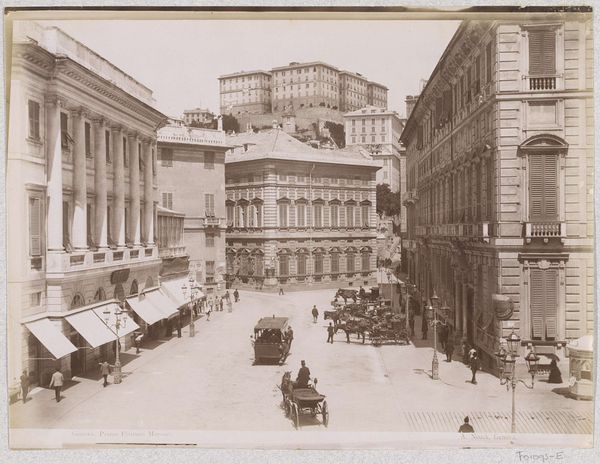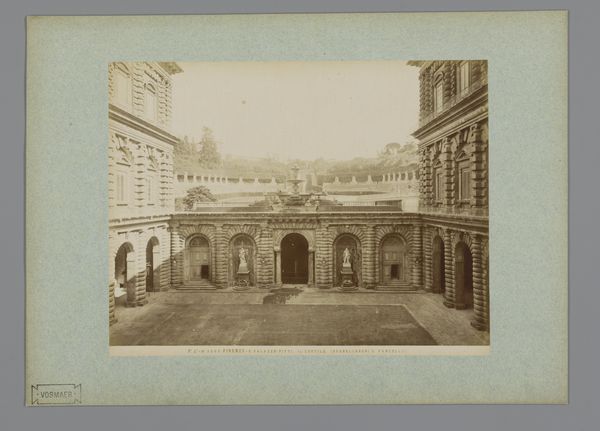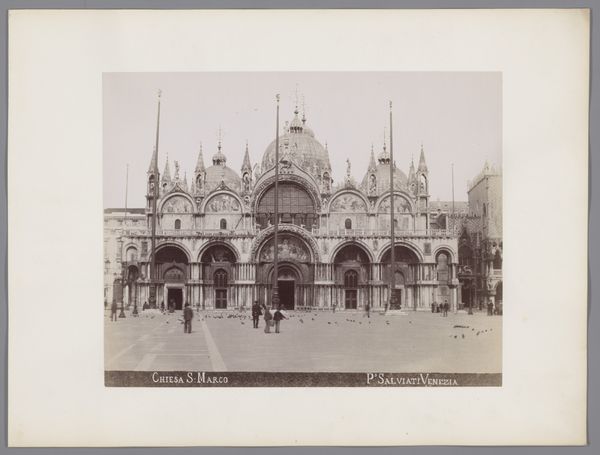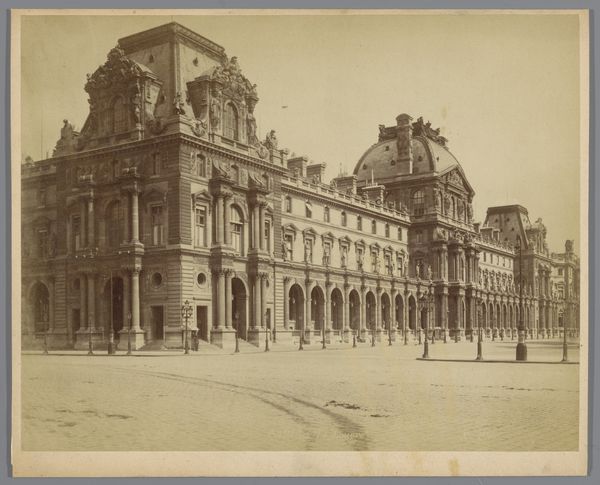
Dimensions: height 195 mm, width 248 mm
Copyright: Rijks Museum: Open Domain
This photograph of the Doge’s Palace in Venice was made by Giorgio Sommer, using a process called albumen silver printing. This technique, popular in the mid-19th century, involved coating paper with egg white and then silver nitrate, creating a surface sensitive to light. The albumen print gives this image its distinctive sepia tone and smooth surface, achieved through careful chemical processes. Each print required skill in preparing the paper, exposing the image in a large format camera, and developing the print to bring out the details of the architecture. Sommer was one of many artists making a living from photography during the rise of tourism. Beyond its aesthetic qualities, this photograph also speaks to the social context of Venice during this period. As the city became a popular tourist destination, photographs like these catered to the growing demand for souvenirs. These images played a role in shaping perceptions of Venice, turning its monuments into commodities. So, next time you see a vintage photograph, consider not just what it depicts, but how its production and circulation contributed to broader cultural and economic trends.
Comments
No comments
Be the first to comment and join the conversation on the ultimate creative platform.
